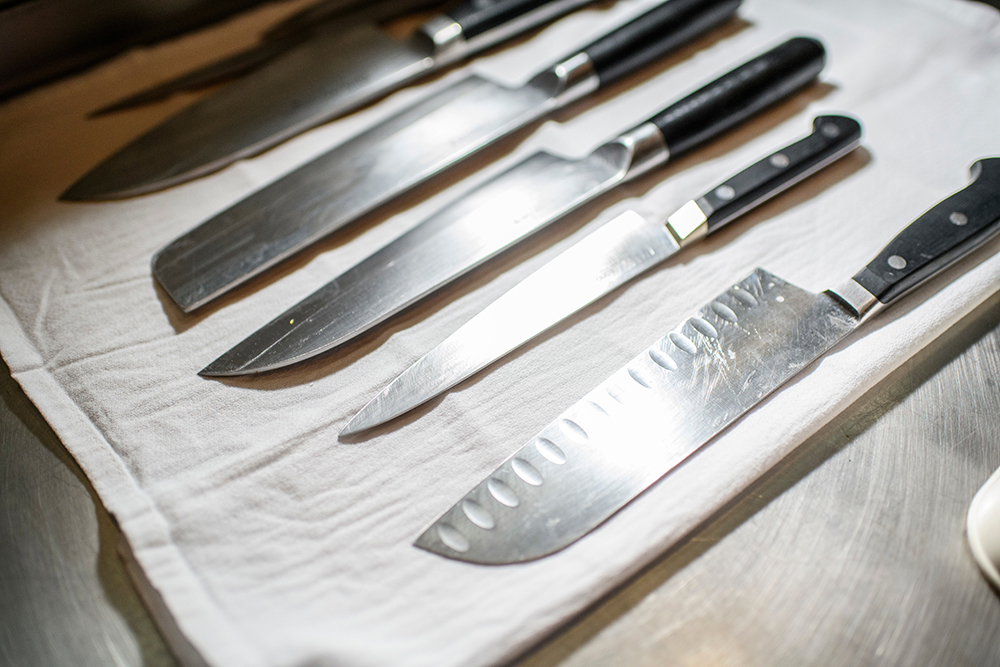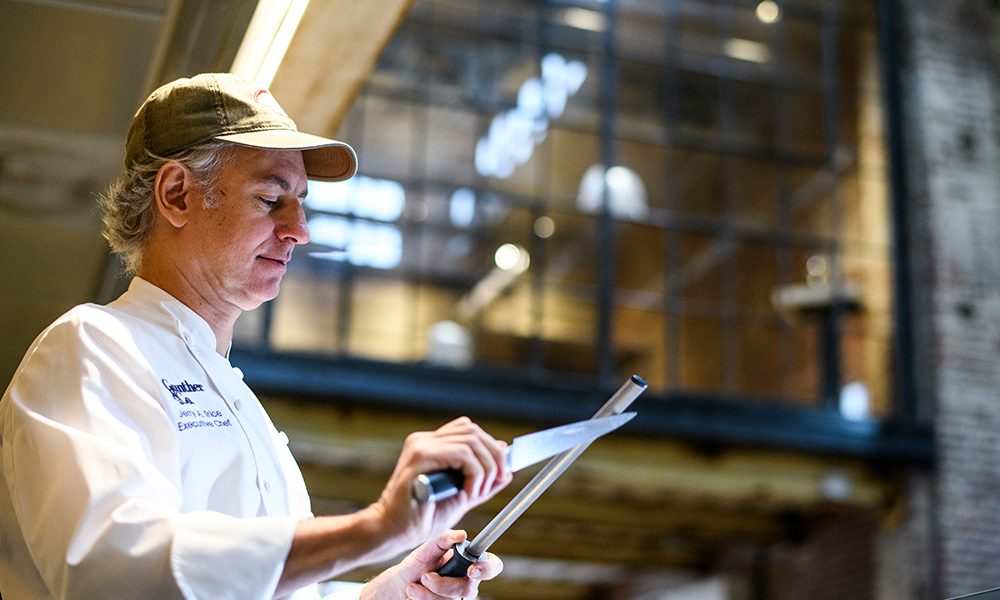Food & Drink
Blades of Glory
Want to stay a cut above in the kitchen? Chefs share how.
When it comes to knife skills, it’s easy to tell the pros from the neophytes. And that’s because, whether your knife is made of Japanese carbon steel or German stainless, there’s a lot to know—from chopping herbs without bruising them to mastering the art of the julienne to knowing how to hasselback potatoes.
But it doesn’t take a diploma from the Culinary Institute of America (CIA) in Hyde Park, New York to learn how to cut with surgical precision. The experts say that it all begins with buying the right knife. Gunther & Co. executive chef-owner Jerry Trice says to “forget the brand and buy what feels comfortable in your hand—the best knife is the one you’re comfortable sharpening and holding.”
Chef David Bruno, who teaches basic knife skills at the CIA, echoes that sentiment: “I’m often asked, ‘What’s the best knife?’” he says. “The best knife is a sharp knife. It’s not the knife that does the job. It’s the person holding it.”
Learning proper technique is a critical component of cooking and can actually impact taste. “The food is consumed first with the eyes,” says Trice, a graduate of the CIA. “And you will have irregular cooking times because the potatoes or your carrots or leeks will be overcooked or al dente if they’re not evenly cut.”
Think of a knife as an extension of your hand, and remember that respect for this kitchen tool is key. Says Cunningham’s executive chef Jay Rohling: “There’s an old saying in Japan that when you pick up your knife, part of your soul goes into it.”

Knife Tips
A knife can be the ultimate taskmaster, but only if you’re using it properly. Remember, a knife can go from work-horse to weapon in an instant. “We have a lot of Band-Aids in class,” says Bruno. Here are some tips on using the right knife for the right job.
CHEF’S KNIFE
This versatile knife has a more pronounced curve at the tip. A chef’s knife is good for slicing meat and chopping vegetables.
PARING KNIFE
This knife has a short blade that’s great for detail work like peeling small fruits or vegetables and creating garnishes.
SERRATED KNIFE
The serrated blade is about eight to 10 inches long. It cuts cleanly through fruits and vegetables and slices items like bagels and loaves of bread without tearing them.
BONING KNIFE
A boning knife’s flexibility is designed to reach into small spaces to help detach meat from the bone and is used for beef, chicken, and fish.
CLEAVER
The cleaver, though often featured in slash-and-gash horror films, is nothing more than a rectangular knife with a thick, ultra-sharp, heavy blade that narrows to a sharp edge.
